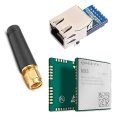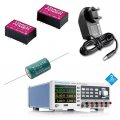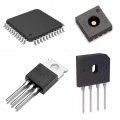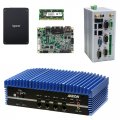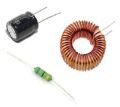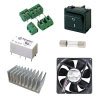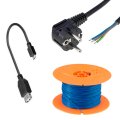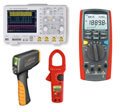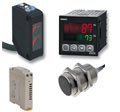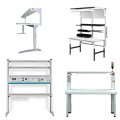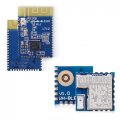
Klíčové funkce a nové lokalizační služby BT 6.0
Bluetooth se běžně využívá pro bezdrátovou výměnu dat v různých aplikacích, a to do vzdálenosti několika desítek metrů. Třebaže jsou maximální rychlosti přenosu dat skromné a omezené na několik MB/s, silná podpora připojení ze zařízení, jako jsou počítače a smartphony, činí bluetooth ideálním pro spojení typu point-to-point v rámci budov. Běžně se používá při úkolech s nízkou šířkou pásma, jako je streamování zvuku do reproduktorů, posílání dat do tiskáren nebo připojení vstupních zařízení jako klávesnice a kamera.
Bluetooth umožňuje také bezproblémovou synchronizaci dat a výměnu informací mezi dvěma zařízeními. V domácí automatizaci je bluetooth klíčovým prvkem pro IoT (internet věcí) zařízení jako inteligentní světla, zámky a spotřebiče, umožňující uživatelům ovládat své domácnosti na dálku. Takové každodenní využití významně přispělo k celosvětové oblibě bluetoothu.
Vylepšené zpracování izochronních datových přenosů BT 6.0
Izochronní přenos je klíčový pro doručování dat při pevně stanovené rychlosti, zejména při streamování zvuku. Pro vylepšení tohoto aspektu zavádí BT 6.0 izochronní adaptační vrstvu (ISOAL – isochronous adaptation layer), která minimalizuje zpoždění a zajišťuje plynulý přenos zvuku. Je to ideální pro aplikace jako naslouchací pomůcky, bezdrátové mikrofony a herní sluchátka, kde je kritický přenos dat v reálném čase a dokonalá synchronizace mezi kanály.
ISOAL zlepšuje také zpracování jiných časově závislých dat, jako jsou synchronizované toky ze senzorů, které musejí přijít včas a ve správném pořadí. To je obzvlášť důležité v oblastech jako rozšířená realita (AR), virtuální realita (VR) a průmyslová automatizace, kde je přesná synchronizace dat mezi zařízeními klíčová.
ISOAL zahrnuje rovněž mechanismy pro zvládání ztráty paketů během přenosu. Rekonstrukcí chybějících paketů nebo aplikováním technik dopředné korekce chyb (FEC) zajišťuje nepřetržitý tok dat. Toto vylepšené zpracování chyb znamená méně výpadků během zvukových a datových přenosů, poskytující plynulejší zážitek i při menším rušení signálu.
Vylepšené sledování zařízení a bezpečnost BT 6.0
BT 6.0 posouvá lokalizační služby na novou úroveň vylepšením funkcí sledování a bezpečnosti. Bluetoothové beacony mohou navigovat uživatele na místech, jako jsou nákupní centra a letiště, přenášející informace o poloze do smartphonů. Zařízení s BT mohou pomoci také při hledání ztracených předmětů nebo sledovaní majetku.
Klíčovým přínosem v BT 6.0 je channel sounding, který zlepšuje měření vzdálenosti mezi zařízeními. Tato technika využívá fázové měření vzdálenosti (PBR), kde BT zařízení vysílá signál jinému zařízení, které ho odráží zpět. Vzdálenost se potom vypočítá na základě fázových rozdílů mezi vysílaným a přijímaným signálem na více frekvencích.
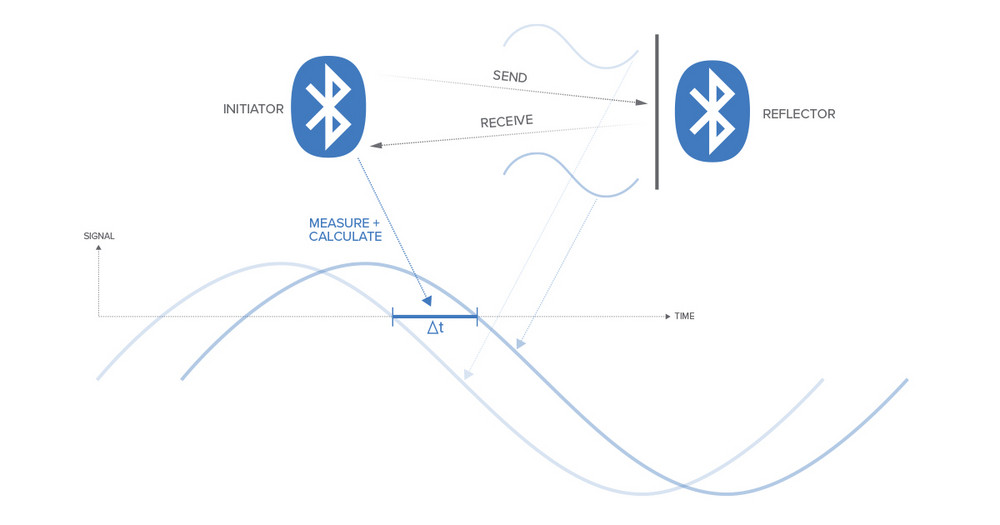
Při průchodu signálu prostorem se jeho fáze mění v důsledku času potřebného na šíření. Vzdálenost mezi vysílačem a přijímačem přímo souvisí s fázovým posunem, který je rozdílem mezi fází vysílaného signálu a přijímaného signálu. Vzdálenost d se vypočítá pomocí fázového posunu Δɸ a vlnové délky λ vysílaného signálu.

Channel sounding však nabízí víc než jen vylepšené měření vzdálenosti. Posiluje také bezpečnost integrací času odraženého signálu (RTT – round-trip time), což představuje sekundární metodu, která pomáhá obraně proti sofistikovaným man-in-the-middle (MITM) relay útokům. Porovnáním RTT s výsledky PBR zajišťuje BT 6.0 to, že pouze zařízení v konkrétním fyzickém dosahu mohou přistupovat k citlivým službám, čímž zvyšuje celkovou bezpečnost.
Vylepšený mechanismus vysílání BT 6.0
Technologe bluetooth umožňuje zařízením komunikovat bez udržování stálého spojení, což je vysoce efektivní při zjisťování zařízení, výměně informací a iniciování spojení. BLE zařízení používají vysílací pakety k posílání malých množství dat do okolních zařízení. Všechny tyto pakety však nejsou relevantní, což může vést k neefektivnosti.
S BT 6.0 filtrování vysílání založené na rozhodovaní (decision-based advertising filtering) tento proces vylepšuje. Skenující zařízení mohou inteligentně filtrovat irelevantní vysílací pakety na základě předem definovaných kritérií, čímž se snižuje zbytečné zpracovávání a spotřeba energie. To činí bluetoothovou komunikaci ješte efektivnější, zejména v aplikacích, kde je šetření energie klíčové.
Monitorování vysílačů
Kromě filtrování zavádí BT 6.0 funkci monitorování vysílačů (monitoring advertisers). To umožňuje skenujícímu zařízení (nebo pozorovateli) sledovat vzdálenost ke konkrétním vysílačům (nebo vysílatelům) v čase. Skenující zařízení může zůstat informované o přítomnosti nebo nepřítomnosti konkrétního BLE zařízení, i když vstupuje do jeho dosahu nebo z něj vychází. To je obzvlášť užitečné v aplikacích, kde není třeba stálé připojení, ale jsou důležité pravidelné aktualizace o stavu zařízení.
BT 6.0 umožňuje nové lokalizační služby
Kombinace následujících nových funkcí BT 6.0
- filtrování vysílání založené na rozhodovaní (decision-based advertising filtering)
- monitorování vysílačů (monitoring advertisers)
- channel sounding
umožňuje pozorovatelům vylepšit proces výběru dat na základě dostupnosti vysílačů, jejich přesné polohy a relevance obsahu vysílaných paketů.
Uvedené funkce takto umožňují inteligentnější chování při skenování a sníženou spotřebu energie, což prospívá zařízením s baterií, jakými jsou nositelná a mobilní zařízení, která vždy nejsou připojená ke zdroji napájení.
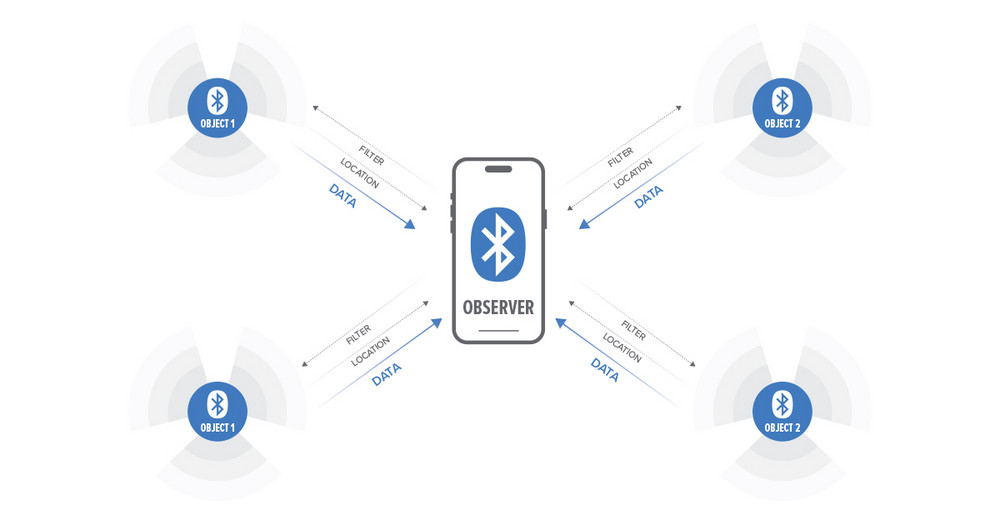
Bluetooth 6.0 otvírá škálu nových lokalizačních služeb, podporující tak různé využití, jako například:
- V obchodoch nebo muzeích: navigace návštevníků nebo poskytování souvisejících informací přibližujícím se osobám.
- V budovách nebo domácnostech: iniciování automatických akcí na základě přítomnosti zařízení, jako odemykání dveří nebo rozsvěcování.
- Ve skladech nebo logistice: BLE štítky připojené ke zboží umožňují sledování polohy v reálném čase nebo pomáhají najít ztracené položky. Pokud majetek opustí určitou zónu nebo do ní vstoupí, může monitorovací systém založený na BT spustit upozornění.
Pro další technické podrobnosti navštivte www.bluetooth.com a zejména „Bluetooth® Core Specification version 6.0 – Feature Overview“.
Široký sortiment produktů založených na BT najdete také v naší nabídce produktů včetně komunikačních modulů, optoelektroniky a zvuku, automatizace, vestavěných systémů a dalších.
Pozn.: Přeloženo z anglického originálu.
Vaše zpětná vazba pomáha vytvářet z článků skutečně užitečný obsah pro jejich čtenáře. Oceňte uvedené informace imaginárním příspěvkem za tento článek.
Pokud máte nějaké otázky anebo připomínky, neváhejte nás kontaktovat. Ještě jednou děkujeme za váš čas a důvěru.
Máte zájem dozvědět se víc o technologii BT nebo potřebujete technickou pomoc při výběru správného produktu? Máte nějaké otázky nebo požadavky? Kontaktujte nás, rádi vám pomůžeme.
Líbí se Vám naše články? Nezmeškejte už ani jeden z nich! Nemusíte se o nic starat, my zajistíme doručení až k Vám.
